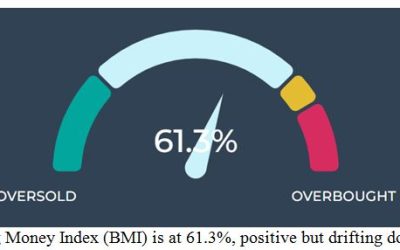by Louis Navellier
September 9, 2025
Bad economic news seems to be good for stocks, since the more bad news we see, the more likely the Fed will cut key rates! At least that’s the way it looks when we see bad news deliver new record market highs.
On the Tuesday after Labor Day, the Institute of Supply Management announced that its manufacturing index rose slightly, to 48.7 in August, up from 48 in July. Any reading below 50 signals a contraction, so the ISM index has now contracted for six straight months. The details in the ISM manufacturing report were mixed, as a sharp drop in the production component to 47.8 (down from 51.4 in July), was offset by a surge in the new orders component to 51.4 (up from 47.1 in July). So, there are some green shoots in the ISM manufacturing index, although only seven of 17-industries surveyed reported any August expansion.
On Thursday, the Commerce Department reported that the U.S. trade deficit for goods surged by over 22% in July to $103.6-billion, which was significantly higher than economists’ consensus estimates of $87.7-billion. July’s imports surged 7.1% to $281.5-billion, despite a drop in auto imports, while exports were flat (at 0.1%) at $178-billion, over $100-billion below imports, creating a huge deficit expansion. Due to this larger trade deficit, economists will have to revise their third quarter GDP estimates down.
Also last Thursday, ADP reported that only 54,000 private-sector payroll jobs were created in August, which was well below economists’ consensus estimate of 68,000. The details were even worse, as manufacturing lost 7,000-jobs and a whopping 17,000-jobs were lost in trade, transportation and utilities. Leisure & Hospitality dominated any positive job creation numbers in August with 50,000-new jobs.
Then, on Friday, the Labor Department announced that only 22,000-payroll jobs were created in August, a massive disappointment, since economists were expecting 75,000 new payroll jobs. Even worse, payrolls were revised lower by a cumulative 21,000 in the past two-months, meaning that June now shows a drop of 13,000 payroll jobs (down from a 14,000 increase previously reported), the first monthly job decline in nearly five years, since December of 2020. The unemployment rate rose to 4.3% in August, up from 4.2% in July and it is now at its highest level since 2021. Average hourly earnings rose by 0.3% (10-cents an hour) to $36.53 per hour and are up 3.7% in the past 12-months. Due to these weak August job reports by both ADP and the BLS, a Fed key interest rate cut on September 17th is now even more widely expected.
In addition to the stock market surge on Friday’s bad news, Treasury yields declined substantially after the August payroll report, as Wall Street now expects three 0.25% key interest rate cuts this year.
A 0.5% key cut next week is possible, but the Fed may not want to show that it is “panicking” and grossly behind about where key interest rates should be, so it may settle for 0.25%. We’re seeing several calls for a 0.5% cut next week, especially if this week’s August Consumer and Producer Price indices come in too far below expectations. Due to lower crude oil prices and softening existing home prices, the upcoming inflation data may border on deflation, which would merit a 0.5% key interest rate cut on September 17th.
Speaking of the Fed, its Beige Book of regional economic growth was released last week, in preparation for the upcoming Federal Open Market Committee (FOMC) meeting on September 16-17. All 12 of the Fed’s districts reported flat to declining consumer spending, compared to the previous Beige Book, which reported a slight increase in consumer spending. Due to this latest Beige Book survey, plus a poor JOLTS report that showed that job openings declining to pre-Covid levels, the stage is set for an interest rate cut.
The Impact of Last Week’s Google Ruling
In company news, Google gained 10% last week, mostly on Wednesday, after the Biden Administration FTC Chair Lina Khan won an antitrust verdict to “break up” Google – a “victory” comparable to “a dog catching a car,” meaning – who really won, the car or the dog? Specifically, a federal judge ruled that Google does not have to sell its Chrome browser, as the FTC initially wanted, since Google is now facing intense competition from other AI search engines. The federal judge went on to write that the emergence of generative artificial intelligence is a challenge to traditional search efforts, which “give(s) the court hope that Google will not simply outbid competitors for distribution, if superior products emerge.”
Google’s stock surged since the FTC victory was effectively neutered. The federal judge ruled that Google still has to share data, so other firms can develop their own search engines, but this was also a victory for Google, which has a virtual monopoly on Internet search engines. Apple and Mozilla were also perceived to win in the ruling, since they have been paying Google to be their default search engines.
Navellier & Associates; own Alphabet Class C (GOOG), and Apple (AAPL), in managed accounts. Louis Navellier and his family own Apple (AAPL), in a personal account. They do not own Alphabet Class C (GOOG).
The post 9-9-25: Last Week’s Jobs Data Lifted Most Major Markets appeared first on Navellier.





